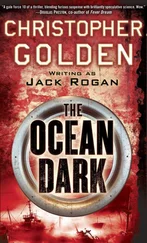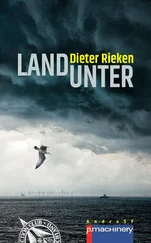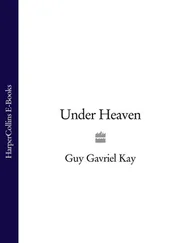Bannon believed China was key to his grand scheme to link the American Far Right and Far Left in a nationalist, populist political realignment. His goal was nothing less than to overturn the neoconservative, neoliberal globalist order—the same sect that Trump had run against. Both Bannon and the new president shared a dream of destroying the power of the political elite in both parties, and Bannon thought he knew how to make that dream a reality. One flaw in his plan, of course, was that the Far Left and the Far Right arguably have much more antipathy for each other than they do common interests. But Bannon believed they could be united on the China issue.
It takes real nerve to lead a populist, anti-China movement when you started out as a Goldman Sachs executive—and when you have already made your money in China before turning against the system that made that possible. After he left Goldman, Bannon worked for six years with a Hong Kong startup called Internet Gaming Entertainment, which used cheap labor in China to mine virtual goods inside computer games to sell for real-world money.
But never mind all that. Bannon was going to get our jobs back from China. And he had a plan.
“The way to do this is to do a reverse Nixon, Russia has to be a potential ally,” Bannon told me later. “Russia is a fucking sideshow, dude. This here is the deal . . . They [Russia] are only on their [China’s] side because they have to be on their side. They hate these guys as much as I do.”
Best-Laid Plans
Bannon’s scheme did not go as planned. The FBI’s Russia investigation took over the news, making any significant warming of relations with Vladimir Putin politically impossible. Putin and Xi Jinping, now both targets of the American establishment, only deepened their countries’ ties and worked together to thwart the United States. The hawk’s plans to do a “reverse Nixon” never got off the ground. And many of the key figures who played a role at the start of the Trump administration’s relationship with China would not be around to see it develop. The endless scandals resulted in nonstop turnover, and one by one, several of the players closest to Trump during the campaign on the China issue found themselves sitting on the sidelines.
Flynn would be fired as national security adviser twenty-four days into the administration for lying to Vice President Mike Pence about his conversations during the transition with Russian ambassador Sergei Kislyak. McFarland had been Flynn’s deputy before his firing, and she also had been involved in Flynn’s dealings with Russian officials during the transition; after initially denying direct involvement, emails surfaced showing that she was in fact in the loop. She would step down from her White House role in April.
Trump subsequently nominated McFarland to be US ambassador to Singapore, but due to her links to the investigation into Flynn’s contacts with Russian officials, she was unconfirmable and eventually withdrew. Bannon wanted Pillsbury to be nominated for the Singapore post, but Pillsbury’s security clearance application was held up due to an unrelated matter—a wrinkle that ultimately prevented him from getting any official Trump administration job, despite the fact that he had Trump’s trust and his ear.
Pillsbury had gotten caught up in the security clearance investigation of another NSC staffer: a well-known China hawk named Adam Lovinger who had been working at the Pentagon’s Office of Net Assessment. That office had been run for decades by legendary strategist Andy Marshall, who had led the office well into his nineties, set on the mission of looking beyond the horizon at the strategic challenges facing the United States. He mentored a generation of China hands in the process, including Pillsbury and Lovinger. But Lovinger clashed with Marshall’s replacement, James Baker, and was accused of mishandling classified information (a charge Lovinger denies). Pillsbury got dragged into the fray because he had worked with Lovinger on a project for the Office of Net Assessment. Pillsbury would not be able to get a clearance, Bannon was told firmly. He never stopped trying to fix his clearance probtem. But others got the prime postings.
Trump did appoint an ambassador to Beijing, but not one that Bannon would have ever wanted. Iowa governor Terry Branstad’s nomination had been announced before Trump even took office. A former friend of the Chinese president from Xi’s time as a study-abroad student in Iowa, Branstad seemed a logical choice to the public, but he was not on board with the more confrontational policy that Trump’s China team had been pushing. His easy confirmation in late spring 2017 placed him as a permanent but not overly important counterweight to the hardliners and the hawks—a thumb on the scale opposite Bannons.
The leadership in Beijing should have been reassured by Trump’s choice of ambassador, but they remained convinced that Bannon was in charge of the China policy—and they remained concerned that his views matched Trump’s. If they had known just how timited Bannons time in the West Wing would be, they might not have been so worried.
Picking on Peter
Unlike some of his comrades on Trump’s early China team, Peter Navarro managed not to be sidelined—at least, not entirely. Instead, he settled in for a long struggle over policy and set about scheming with like-minded trade hawks to push forward the trade war against China that Trump had advertised during the campaign. He worked with Stephen Miller, US Trade Representative Robert Lighthizer, and others to convince the president—successfully—that national security tools should be used to implement broad and escalating tariffs to pressure China. But to reach that prize, he would have to walk over coals.
Navarro’s call for confronting all of China’s malign economic activity and decoupling the two large economies had fit neatly into Trump’s campaign strategy, which was geared toward highlighting the economic grievances of rural Americans and blaming the current leaders in both Washington and Beijing. But once he joined the administration, the University of California at Irvine economist would be constantly attacked and ridiculed by Kushner and his free market-oriented Wall Street clique, which came to include Treasury Secretary Steven Mnuchin, National Economic Council director Gary Cohn, and others.
Almost immediately after inauguration, the other factions joined forces to marginalize Navarro. One news report said White House chief of staff Reince Priebus intended to assign Navarro to an office in the basement of the Commerce Department, rather than placing him in the Old Executive Office Building, which is on the White House compound grounds. Bannon claims he thwarted that plan. Navarro believes it was just a press leak meant to demean him. In any case, Navarro wasn’t assigned an office on the White House campus and had to work out of his home for the first three weeks. After that, he was given the rank of deputy assistant to the president, a full notch below the rank of assistant to the president, which was granted to his West Wing counterparts such as Bannon, Priebus, Flynn, Cohn—even White House press secretary Sean Spicer.
There were other indignities. Whereas Cohn’s spot at the head of the National Economic Council came with a robust staff and office space in the West Wing, Navarro was named the head of the National Trade Council, which had never existed before and had hardly any staff or money. He was eventually assigned an office at the Old Executive Office Building next to the White House. But he wasn’t allowed to see the president for almost two months after Trump took office.
When Navarro finally was permitted to see Trump in the Oval Office in early March, he had a huge argument with Cohn in front of the president—what would be the first of many fights between the two men. It wasn’t just about China. The US negotiations with Mexico over a new free trade agreement to replace NAFTA were already heating up, and German chancellor Angela Merkel was on her way to Washington to talk trade as well. Kushner, Cohn, and Mnuchin were taking control of all these relationships. Navarro was getting cut out of the loop, with the damaging leaks about his treatment adding insult to injury.
Читать дальше











